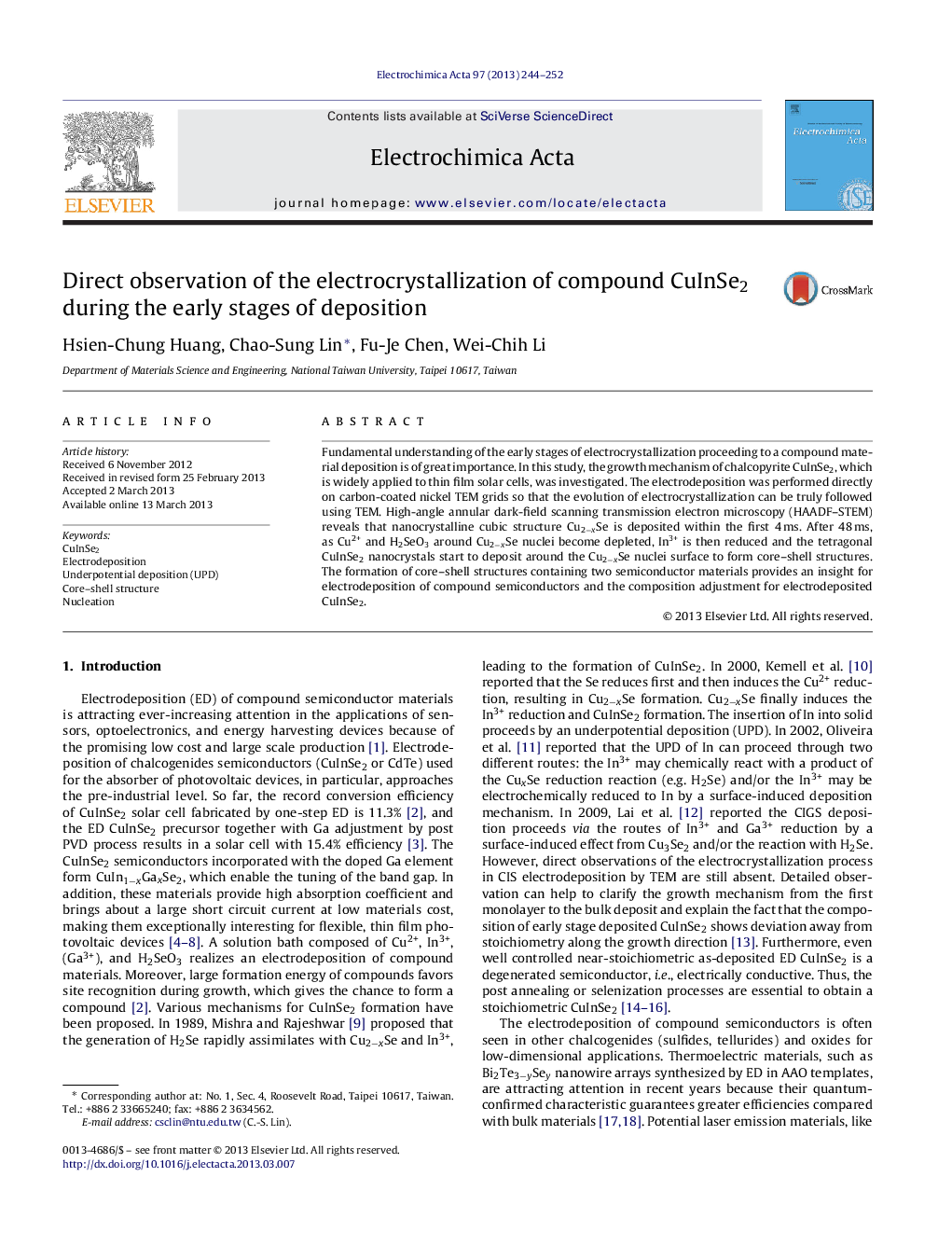| Article ID | Journal | Published Year | Pages | File Type |
|---|---|---|---|---|
| 186940 | Electrochimica Acta | 2013 | 9 Pages |
•Direct observation of compound CuInSe2 electrocrystallization is made on carbon-coated nickel TEM grids.•Cu2−xSe is deposited within the first 4 ms and triggers the deposition of CuInSe2 after 48 ms.•No metallic Cu, In, and Se is detected within the first 4 ms (4–8 monolayer) by TEM and Raman spectroscopy.•Nanocrystals CuInSe2 deposit around the Cu2−xSe nuclei surface to form core–shell structures.•Numerical fitting indicates CuInSe2 electroplating exhibits a multi-steps 2D–3D mixing nucleation process.
Fundamental understanding of the early stages of electrocrystallization proceeding to a compound material deposition is of great importance. In this study, the growth mechanism of chalcopyrite CuInSe2, which is widely applied to thin film solar cells, was investigated. The electrodeposition was performed directly on carbon-coated nickel TEM grids so that the evolution of electrocrystallization can be truly followed using TEM. High-angle annular dark-field scanning transmission electron microscopy (HAADF–STEM) reveals that nanocrystalline cubic structure Cu2−xSe is deposited within the first 4 ms. After 48 ms, as Cu2+ and H2SeO3 around Cu2−xSe nuclei become depleted, In3+ is then reduced and the tetragonal CuInSe2 nanocrystals start to deposit around the Cu2−xSe nuclei surface to form core–shell structures. The formation of core–shell structures containing two semiconductor materials provides an insight for electrodeposition of compound semiconductors and the composition adjustment for electrodeposited CuInSe2.
